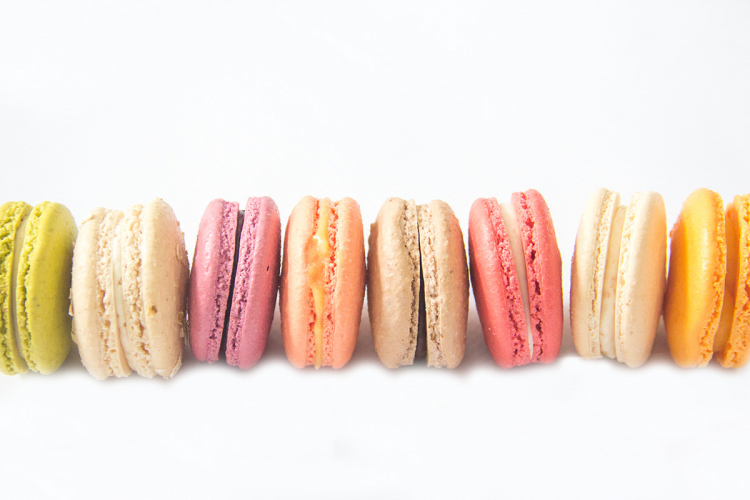The Mysterious Macaron

After only a few drops of extract, the tangent smell of passion fruit wafted through the air and made our mouths water. We watched our instructor, Audrey, fold the flavoring into the chocolate ganache, eagerly awaiting our taste test of the mixture. A miniature spoonful of ganache later, we were content.
If you’ve ever strolled the streets of Paris, you probably know how prevalent macarons are in pâtisseries all around the city. What you probably don’t know is how unique and precise the process of making macarons is. Each step is crucial to making the perfect cookie, and no mistakes are welcome. Last weekend, I had the pleasure of taking a macaron baking course at L’Atelier des Gâteaux, and I learned so much about the French staple that previously eluded me.
My first revelation was that the cookies are all the same flavor.
Yes, you read that right. It’s the punch of flavor in the filling that gives each macaron its unique taste because the cookie shells taste the exact same. The varying colors come from powdered food coloring, not from the flavoring. Citrus fruits are most commonly used because they balance out the sweetness of the cookie on their own. It is uncommon for sweet berries, such as strawberries, to be used as a filling unless other ingredients, such as herbs or spices, are added to counteract the sweetness.
The pastry chef carefully pipes filling onto macaron cookies. Image credit: Creative Commons/star5112
The cookie is made from only four ingredients and is gluten-free.
Powdered sugar, egg whites, almond flour, and granulated sugar are all you need to create the delicious macaron cookie. The powdered sugar and egg whites are whipped together to make the meringue. Once the meringue forms its peaks, the almond flour and granulated sugar are added to create the perfect cookie batter consistency.
One word: Macaronage.
The French invented the term “macaronage” to describe the mixing technique used when making the cookie batter. It is a very specific way of folding the almond flour into the meringue with a spatula. You can tell it is combined enough when the batter drips in a specific way. Macaronaging is a crucial step in the process because it rids the batter of excess air and prevents hollows in the baked cookies. All you need is a little patience and a strong arm to make the perfect batter.
The cookies are the size and shape of a quarter before they bake.
When Audrey showed us how to dispense the batter properly, I was shocked at how tiny each circle needed to be. The batter is put into a pastry bag, and a round tip is fixed to the bottom. The bag must be held perpendicular to the tray with even pressure applied as the batter is squeezed out. The result is rows of perfectly spaced circles that look much smaller than the finished macaron.
During the course, I learned that macaron baking is truly an art. I was doing my best to remember every little secret that Audrey revealed to the class, as I anticipate making macarons at home, but her final instruction was by far the most difficult. We were to resist eating the mouth-watering macarons for 24 hours. The cookies come out of the oven noticeably crunchy, and they need time to soften into the texture they are known for.
Macarons have always been one of my favorite treats, even before I came to Paris. The passing time while waiting to indulge in my creations compelled me to form a genuine appreciation of the dedication it takes to make macarons every single day. I can easily say that I will never look at them the same way.


